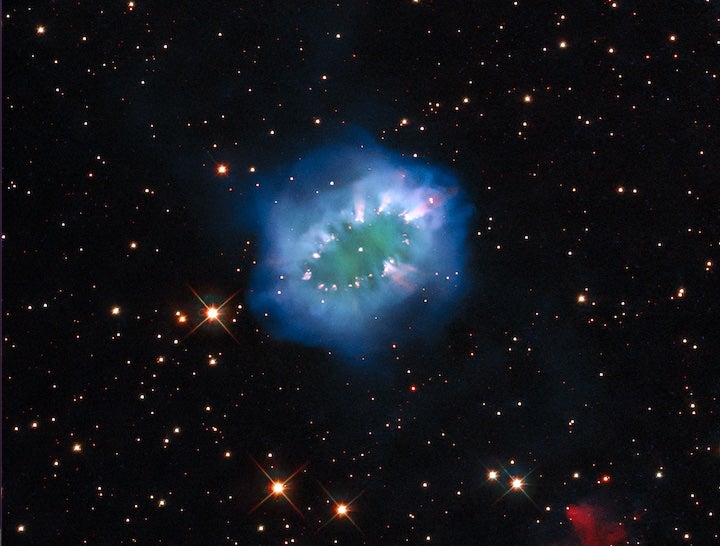
The object below is a planetary nebula in the small northern constellation Sagitta the Arrow. Cataloged as either IPHASX J194359.5+170901 or PN G054.2–03.4, it’s a lot easier to refer to it by its common name, the Necklace Nebula. Although you won’t see it visually even through the largest amateur telescopes, you can find its position by looking 1° east-southeast of magnitude 4.4 Beta (β) Sagittae.
Researchers in the Canary Islands, Spain, discovered it in 2005 in data acquired by the Isaac Newton Telescope Photometric H-alpha Survey. The Necklace Nebula lies about 15,000 light-years away and has a diameter of about 2 light-years.
This planetary nebula formed thanks to a pair of Sun-like stars in a close binary system at the center. One of the stars evolved a bit faster than the other, becoming a giant. About 10,000 years ago, the giant star expanded to a point where it completely engulfed its companion, called a “common envelope.” But it didn’t consume it. Because the outer layers of the giant were composed of such thin gas, the Sun-like star continued to revolve around the center of its captor. This dramatically increased the giant’s rotational speed. Eventually, the larger star spun so fast that a large percentage of its outer atmosphere expanded into space, producing the planetary nebula.
In this case, most of the gas flew outward along the giant star’s equator, producing the ring we now see. The bright spots along the ring are regions of denser gas.
The Sun-like star continues to orbit the core of the giant about every 27 hours. And the two stars are close, separated by only about 2 million miles (3.2 million km).









